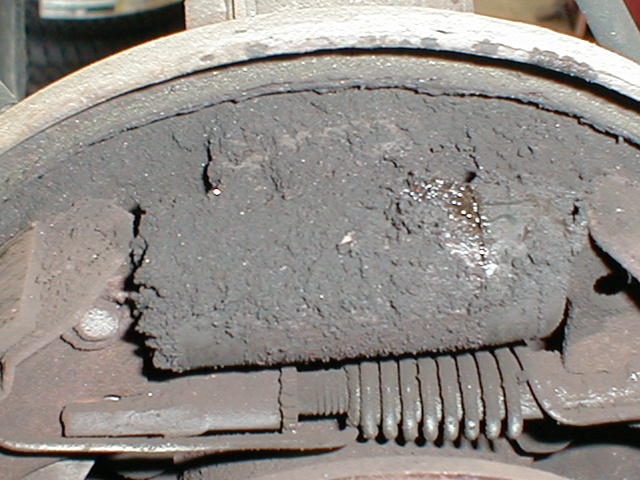Diagnosing Brake Problems
There is an increasing awareness of the dangers of water and corrosion producing contaminates. Brake fluid contaminated by moisture lowers the boiling point of the fluid to the point that, even under ordinary conditions, your brakes could get hot enough to cause the brake fluid to boil causing vapor to form in the brake system. The vapor is compressible, causing a low or no brake pedal. Moisture gets into the fluid because conventional brake fluid is hygroscopic (it absorbs moisture out of the air by design). In your vehicle, moisture is absorbed through the brake master cylinder reservoir and permeable brake hoses.
As a result of this, the moisture along with the steel line, rubber hoses, cast iron, aluminum and brake fluid, temperatures can reach 400 to 500 degrees. This causes an electrochemical reaction that makes the brake fluid so acidic that it can result in early failure of brake components and put you in danger.
Brake fluid contamination has become so much of a concern of the major car manufacturers, that they have added it to their required maintenance. Failure to change your vehicle’s brake fluid can result in very costly repairs. If you have a vehicle with ABS-type brakes, component failure can run into the thousands.

Brake Fluid Flushing
Your brake fluid should be flushed every 30,000 miles or every 2 years. Just adding new fluid is not sufficient enough, the system needs to be properly flushed to rid the system from contaminants and moisture. We at R\A Automotive are ASE Certified Master Technicians and can properly maintain and service your vehicle’s brake system.

Leaky Wheel Cylinder
The wet spot in the center is brake fluid leaking past the inner seal. This cylinder is bad and needs replacement.

Brake Pad Chatter & Rotor Hot Spots
Note the rough appearance around the outside face of the rotor. If your brakes pulse or grab, this may be part of your problem.
Are You Experiencing Any of These Problems?
Your Brake System could be trying to tell you something – listed below are some common symptoms and what they might be a result of. Be aware of these warning signs. Have your brakes checked annually!
-
Squealing or Grinding Noise
Can be a result of worn brake pads or shoe lining. If the lining is worn too badly, they can score the brake drums or rotors reducing braking efficiency.
-
Brake Noise or Squeal
Can be a signal of dragging brake lining, which can result in poor gas mileage, premature wear and damage to brake drum or rotor surfaces.
-
Brake Chatter or Pedal Pulse
Can indicate a warped brake rotor or uneven brake drum surface. Excessive pedal travel or “bottoming out” may even mean the rotor or drum is below safe limits.
-
Grabbing Brakes
Often signs of a leaking brake caliper, master cylinder or wheel cylinder.
-
Soft Pedal
Can be an indication of several problems; a leak in the hydraulic system or low fluid level.
-
Excessive Brake Lining Wear
Can be the result of wrong quality grade lining or the type of driving you do. If you tow a vehicle, haul excessive weight, live in mountainous terrain, perform sudden stops and quick braking.
